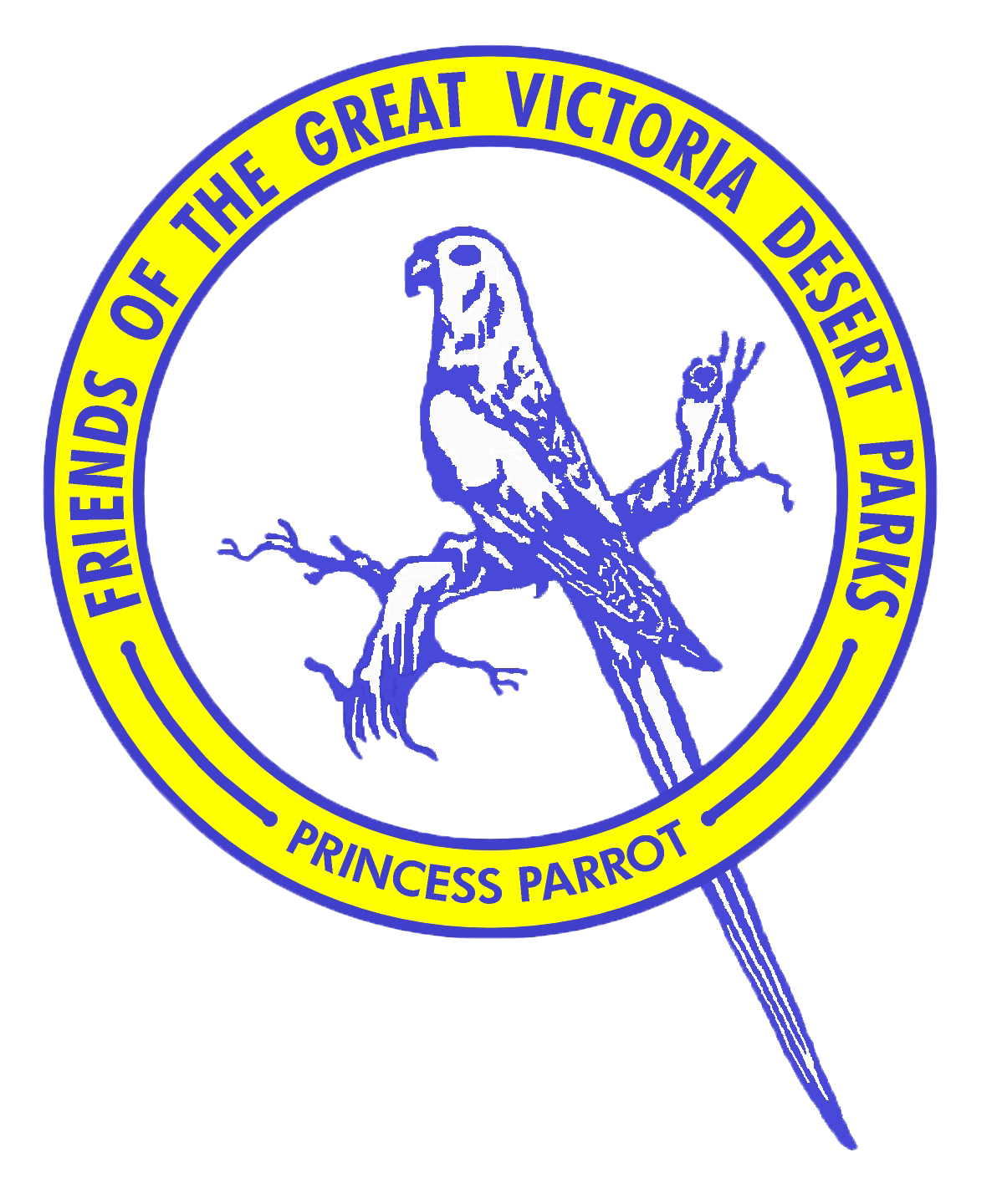Field Trip 2011
In 2011 we carried out vegetation plot surveys, photopoint recording, bird monitoring, animal tracking and other activities.
The trip achieved a lot, including 8 full vegetation surveys on 1 hectare plots, sightings and recordings of 58 bird species, collection of various invertebrates for the SA Museum, photography at new and existing vegetation photopoints, checking of our interpretative trail and a visit to the Rodinia Oil Rig. The highlight was undoubtedly the sighting of the elusive Princess Parrot – a rare bird which not many members had seen before. A video of mating princess parrots taken by Fred Murray-Walker will be included in a display at the SA Museum Biodiversity Gallery.
As has been the case for the last few years, the Alinytjara Wilurara Natural Resources Management (AWNRM) Board provided substantial support for the 2011 field trip.
REPORT:
The 2011 trip made use of mining access roads developed over a period of years – more recently by Rodinia Oil. The large group was divided into two for initial access – one led by Peter Facy via Oak Valley, the other led by Phil Gaukroger via Nullabor.
Five vegetation surveys and bird, animal and invertebrate sightings were completed out of the first camp. The group then visited a Rodinia rig en route to the second campsite where three further vegetation plots and bird, animal and invertebrate surveys were completed.
Birds
58 species were sighted. New bird observation processes were adopted compared with previous years – an opportunistic approach replaced focusing only on the vegetation plots. Most days included a birding excursion morning and afternoon. Highlights included crimson chats, blue bonnet parrots, mulga parrots, nesting thornbills, white backed swallows and a peregrine falcon. The most exciting of all were multiple sightings of the Wipu Wara or princess parrot (very rare in the wild, but seen by most members of the group on this trip). A video of mating parrots was taken by Fred Murray-Walker and will be included in a display at the SA Museum Biodiversity Gallery. A report from the bird group appears in Newsletter 41
Vegetation
The vegetation survey team recorded:
- at least 10species of Eucalyptus, including the rare E. wyolensis, E. youngiana (Oolea Mallee) and E. gongylocarpa (Marble Gum)
- 10 species of Acacia – including variations of A. aneura (mulga) which are of particular interest to the State Herbarium
- numerous salt bushes (members of the Chenopodiaceae family)
- 10 daisy species – mainly everlasting daisies
- Many grasses – the spear grasses were particularly attractive
- Duboisia hopwoodii (flowering) – this plant is the source of Pituri, a narcotic traded by Aboriginal people
- 11 Eremophilia species, many in flower and including some rare species.
The survey procedure determined by DENR was used, as in past years, with 140 different species collected on the eight plots. The surveys included two adjacent plots – one of which had previously been burnt – surveyed for comparison purposes. There were more new species in the burnt plot, compared to the unburnt, as would be expected. Judy has discussed using opportunistic sightings instead of the full vegetation plot process with State Herbarium staff. They advise that the data collected via a plot survey is considerably more valuable to them than data collected using an opportunistic sighting methodology.
Invertebrates
Numerous specimens were collected. Given that there are 20,000 species of insect in Australia, the identification process is lengthy and depends on availability of expertise in specific areas. The SA Museum had no collections of specimens from the areas covered by the 2011 trip – so everything collected extends the Museum’s knowledge and collection. Some specimens may not be identified for years but they are nevertheless very valuable as they are now accessible to the world and could be loaned in Australia or overseas for scientific research purposes. Jan’s report in Newsletter 41 details the various methods used to collect specimens in the field.
Vegetation Photo Points
The relevant vegetation plots were revisited and rephotographed. 236 plots have now been photographed across the GVD. We try to visit each plot each three years, and Peter has compiled albums of the photos at each plot over time, showing progressive changes to the vegetation. The photographic technique is improving, eg photographs should be taken from the north, adjustments to focal length used. For the first time, photographs were taken of all plants collected on the vegetation plots – these have been forwarded to the State Herbarium with the plant specimens. (Thanks to Maree Goods and Elizabeth Lloyd for their work on this project.). Peter Facy also asked PIRSA to undertake aerial photography/video of vegetation east of BMR3 and west of the burnt out area in Mumangari. This is now available – we need to learn how to used this valuable information.
Information points
Mal’s group checked that our information posts on the western part of the Anne Beadell Highway are still there and functional.
